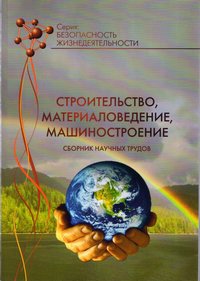Epizothological monitoring of Newcastle diseases in Dnepropetrovsk region
DOI:
https://doi.org/10.30838/P.CMM.2415.250918.106.138Keywords:
virus diseases of birds, Newcastle disease virus, monitoring, antibody titers, pathogenicity indexAbstract
Purpose. Monitoring of Newcastle disease among different groups of birds in Dnipropetrovsk region. Method. The biological material of the investigated bird specimens was checked for antibodies to Newcastle disease virus using methods such as haemagglutination and immunoassay. Results. An intravenous index of pathogenicity of an isolated Newcastle disease virus has been established. Newcastle disease virus circulation in the population of farm birds in the study period is absent, wild andsinanthropic birds should be classified as a risk group and considered as a reservoir for the Newcastle disease virus. Scientific novelty. The results obtained and their novelty: the extent of the Newcastle disease virus spread among various species of birds in Dnipropetrovsk region for 2015 is analyzed. Practical meaningfulness. The results obtained are a scientific basis for developing measures to combat, prevent, and prevent the emergence of Newcastle disease among farmed birds.
References
Abdyildaeva R.T. Kompleksnaya diagnostika bolezni Nyukasla / R.T. Abdyildaeva, E.K. Akmatova, I.U. Saadanov // Vestnik Altayskogo gosudarstvennogo agrarnogo universiteta. – 2016. – № 7. – S. 149 – 152.
Abdyildaeva R.T. Diagnostika bolezni Nyukasla s primeneniem polimeraznoy tsepnoy reaktsii (PTsR) / R.T. Abdyildaeva, E.K. Akmatova, Zh.A. Atambekova, A.A. Kamarli // Vestnik Altayskogo gosudarstvennogo agrarnogo universiteta. – 2016. – № 6. –S. 137 – 141.
Alexander D.J. The long view: a selective review 40 years of Newcastle disease research / D.J. Alexander, E.W. Aldous, C.M. Fuller // Avian Pathology. – 2012. – № 41(4). – S. 329–335 (doi: 10.1080/03079457. 2012.697991).
Diel D.G. Genetic diversity of avian paramyxovirus type 1: Proposal for a unified nomenclature and classification system of Newcastle disease virus genotypes / D.G. Diel, L.H.A. Silva, H. Liu, Z. Wang, P.J. Miller, C.L. Afonso // Infect. Genet. – 2012. – № 12. – S. 1770 – 1779 (doi: 10.1016/j.meegid.2012.07.012).
Dmitrieva M.E. The use of inactivated vaccines at an early age for the prevention of subclinical forms of infection diseases of birds / M.E. Dmitrieva, I.M. Alchlaev // Farm animals. – 2014. – № 2. –S. 92–96.
Dortmans J.C. Newcastle disease virus outbreaks: vaccine mismatch or inadequate application? / J.C. Dortmans, B.P. Peeters, G. Koch // Vet. Microbiol. – 2012. – № 160(1-2). – S. 17–22 (doi: 10.1016/j.vetmic.2 012.05.003).
Glebenyuk V.V. Harakteristika epIzootologIchnogo protsesu skazu v DnipropetrovskIy oblasti / V.V. Glebenyuk // Naukoviy vIsnik LvIvskogo NUVMta BT іm. S.Z. Gzhitskogo. – 2014. – T. 16, № 2 (59), Ch. 1. – S. 17 – 20.
Korotetskiy I.S. Molecular-genetic characteristics of the cyclic isolates of the virus of Newcastle disease, isolated in the territory of the Russian Federation, Ukraine, Kazakhstan and Kyrgyzstan / I.S. Korotetskiy, A.Ya. Bogoyavlenskiy, A.G. Prilipov, E.V. Usachev, O.V. Usacheva, A.S. Turmagambetova, I.A. Zaytseva, A. Kydyrmanov, L.I. Shakhvorostova, M.Kh. Sayatov, V.V. Borisov, I.P. Pchelkina, A.P. Gerilovich, V.E. Berezin // Questions of Virology. – 2010. – № 4. –S. 29–32.
Munir M. Genomic and biological characterization of a velogenic Newcastle disease virus isolated from a healthy backyard poultry flock in 2010 / M. Munir, S. Zohari, M. Abbas, M.T. Khan, M. Berg // Virology Journal. – 2012. – № 9. – S. 40 –46 (doi: 10.1186/1743-422X-9-46).
Oryinbaev M.B. Molekulyarno-biologicheskie svoystva patogennyih virusov bolezni Nyukasla, vyidelennyih na territorii Kazahstana / M.B. Oryinbaev, K.T.Sultankulova, A.A.Kerimbaev, V.M. Strochkov, E.K. Shalgyinbaev, Z.D.Omarova, G.K. Musaeva, E.D. Burashev, Zh.K.Kyidyirbaev, A.R.Sansyizbay. – 2016. – T.51 № 2. – S. 255 – 263.
Pchelkina I.P. Genetic analysis and genotypic examination of isolates of Newcastle disease virus isolated on the territory ofthe Russian Federation in 2010 / I.P. Pchelkina, S.N. Кolosov, I.A. Chvala, S.K. Starov // Proceedings of the Federal Center for Animal Health (Vladimir) . – 2011. – № 9. – S. 94 –103.
Tkachenko O.A. EpIzootologIchniy monItoring skazu v DnIpropetrovskIy oblastI / O.A. Tkachenko, L.S. Korolenko, V.V. Glebenyuk // Naukovo-tehnIchniy byuleten NDTs bIobezpeki ta ekologIchnogo kontrolyu resursIv APK. – 2014. – T. 2, № 1. – S. 116 – 121.
Downloads
Published
Issue
Section
License
Редакція Видання категорично засуджує прояви плагіату в статтях та вживає всіх можливих заходів для його недопущення. Плагіат розглядається як форма порушення авторських прав і наукової етики.
При виявлені у статті більш ніж 25% запозиченого тексту без відповідних посилань та використання лапок, стаття кваліфікується як така, що містить плагіат. У цьому випадку стаття більше не розглядається редакцією, а автор отримує перше попередження.
Автори, в статтях яких повторно виявлено плагіат, не зможуть публікуватися в усіх журналах Видавництва ДВНЗ «Придніпровська державна академія будівництва та архітектури».
Автори, які публікуються у цьому журналі, погоджуються з наступними умовами:
- Автори залишають за собою право на авторство своєї роботи та передають журналу право першої публікації цієї роботи на умовах ліцензії Creative Commons Attribution License, котра дозволяє іншим особам вільно розповсюджувати опубліковану роботу з обов'язковим посиланням на авторів оригінальної роботи та першу публікацію роботи у цьому журналі.
- Автори мають право укладати самостійні додаткові угоди щодо неексклюзивного розповсюдження роботи у тому вигляді, в якому вона була опублікована цим журналом (наприклад, розміщувати роботу в електронному сховищі установи або публікувати у складі монографії), за умови збереження посилання на першу публікацію роботи у цьому журналі.
- Політика журналу дозволяє і заохочує розміщення авторами в мережі Інтернет (наприклад, у сховищах установ або на особистих веб-сайтах) рукопису роботи, як до подання цього рукопису до редакції, так і під час його редакційного опрацювання, оскільки це сприяє виникненню продуктивної наукової дискусії та позитивно позначається на оперативності та динаміці цитування опублікованої роботи (див. The Effect of Open Access).

